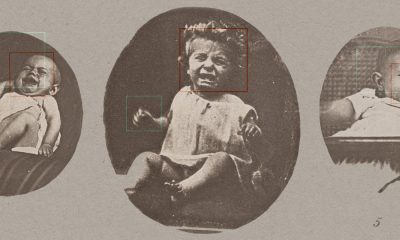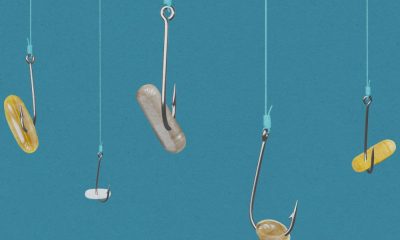What Is Tech Neck?
“Tech neck” or “text neck” isn’t an official condition. Instead, it’s a common way to describe pain felt in the neck area from straining the head forward to look at a screen for long periods of time.
The problem of tech neck has become common, as many of us now spend much more time working, socializing, playing games, or just passing time on phones, tablet,s and laptop screens. Screen time has gone way up, without much consideration of how it affects posture and pain in the neck and back.
Many are finding that screen time is steadily increasing as they spend more time at home — and all of these behaviors can contribute to tech neck, poor posture, and nagging pain. Regardless of how this type of neck pain starts, it can affect your daily routine and cause distress, especially if it sticks around for a while or if you already experience prolonged pain in your neck or upper back.
How Do I Know If I Have Tech Neck?
If you’re wondering if your neck discomfort is coming from excessive device usage, some common symptoms of tech neck pain are:
- Neck spasms or stiff neck
- Headaches
- Sharp or stabbing pain in the lower neck, shoulders, and upper back
- Jaw pain
- Numbness or tingling in the hands and arms
- Rotator cuff tendonitis
- Difficulty in looking up
What Can Help With Managing Tech Neck Pain?
Unfortunately, curbing screen time may not be an option for everyone as tech neck problems can arise while working at a computer.
Neck pain sufferers may be able to find relief by:
- Arching and stretching the affected area when pain arises.
- Taking frequent breaks.
- Adjusting the position of your phone or computer.
Continue reading to learn five simple ways to address your tech neck pain and hopefully prevent tech neck in the future.
Ways To Address Tech Neck Pain
1. Addressing Your Posture
While it may not seem like a big deal, poor posture can play a major role in the development or worsening of pain in the neck, shoulders, and upper back, especially over the long term. Practicing better posture is a simple step you can take now towards preventing pain later.
To correct a hunched-over posture, pull your shoulders back and downward, pull your head back from the screen and engage your core muscles. Situate your feet flat on the floor and consider using a lumbar support cushion for your lower back as well. The goal is to evenly distribute your weight in order to put less stress on muscles, joints, and ligaments.
2. Exercising and Stretching
When you align yourself properly, your head only weighs about 10 pounds, but for every inch you tilt it forward, the amount of weight placed on your spine almost doubles, contributing to strain and muscle pain.
Stretching and conditioning your neck and back muscles can help lessen stiffness and strengthen muscles to help prevent strain and injury. Tech neck sufferers can start by practicing:
- Squeezing the shoulder blades together
- Tucking the chin into the neck
- Pulling and stretching the arms across the chest
If you’re already regularly stretching and exercising, consider adding rowing or pull-ups into your workout routine.
3. Improving Your Desk Setup
To maintain an ergonomic posture while seated, try adjusting your setup with the following tips in mind:
- Put your screen at eye level with the help of a laptop raiser
- Adjust the height of your chair so your forearms can lie straight and your feet can lie flat
- Consider adding more lumbar support with the help of a pillow or cushion
- Keep your mouse and other objects within short reach
- Take breaks and readjust regularly
4. Massage Therapy
Pain sufferers of all kinds can derive benefits from massage therapy. Massage therapy has been shown to provide relaxation benefits, help reduce pain and stress, improve immune function, and more. Pain sufferers can tailor their massage therapy to their needs, with options for different massage techniques and pressures.
Those dealing with tech neck pain can communicate their discomforts with their registered massage therapist to ensure that they target your desired areas and use the appropriate amount of pressure. Getting a relaxing massage can be a great way to “reset”, both physically and mentally.
5. Use DR-HO’S Neck Pain Pro
While massage therapy is amazing when possible, it’s not always the most affordable or accessible option. If you’re looking for a way to relieve neck and shoulder pain wherever and whenever you want, you need a neck pain therapy device.
While there are a lot of shiatsu massagers on the market, the most satisfying and innovative product we’ve seen is the DR-HO’S Neck Pain Pro.
DR-HO’S has made a name for themselves over the past 35 years for their high-quality TENS machines. TENS (Transcutaneous Electrical Nerve Stimulation) targets your nerves with gentle pulses, helping to relieve painful sensations. People love TENS because it’s easy to use, non-invasive, trusted by chiropractors and physical therapists, and doesn’t require any medication.
Most TENS machines are small handheld devices with sticky pads you place on an area of pain. But DR-HO’S has put this powerful pain relief technology into a plush, comfortable, and easy-to-use neck pillow – the Neck Pain Pro.
Key Features of the Neck Pain Pro:
1. It has an ergonomic design that contours to your neck and shoulders. This includes four built-in electrodes that send targeted, deep pain therapy sensations right to your sore, achy neck and shoulder muscles.
2. It feels like a soothing massage. With three different options for kneading, chopping, and rubbing, this makes it the perfect way to relax following a day of prolonged screen use.
3. It can be adapted for use on other parts of the body. The DR-HO’S TENS unit can be detached from the Neck Pain Pro and connected to body pads (provided in the package) to use elsewhere on the body. Are your legs sore from standing or moving all day? Struggling with a sore mid or lower back from heavy lifting? Or do you have any hip, leg, or knee pain from exercise? This is a great feature to help you start to manage daily pain!
Try The Neck Pain Pro with a 90-Day Money Back Guarantee
If you’d like to learn more about Neck Pain Pro and how you can try it risk-free with a 90-Day Money-Back Guarantee at-home trial, click here!























